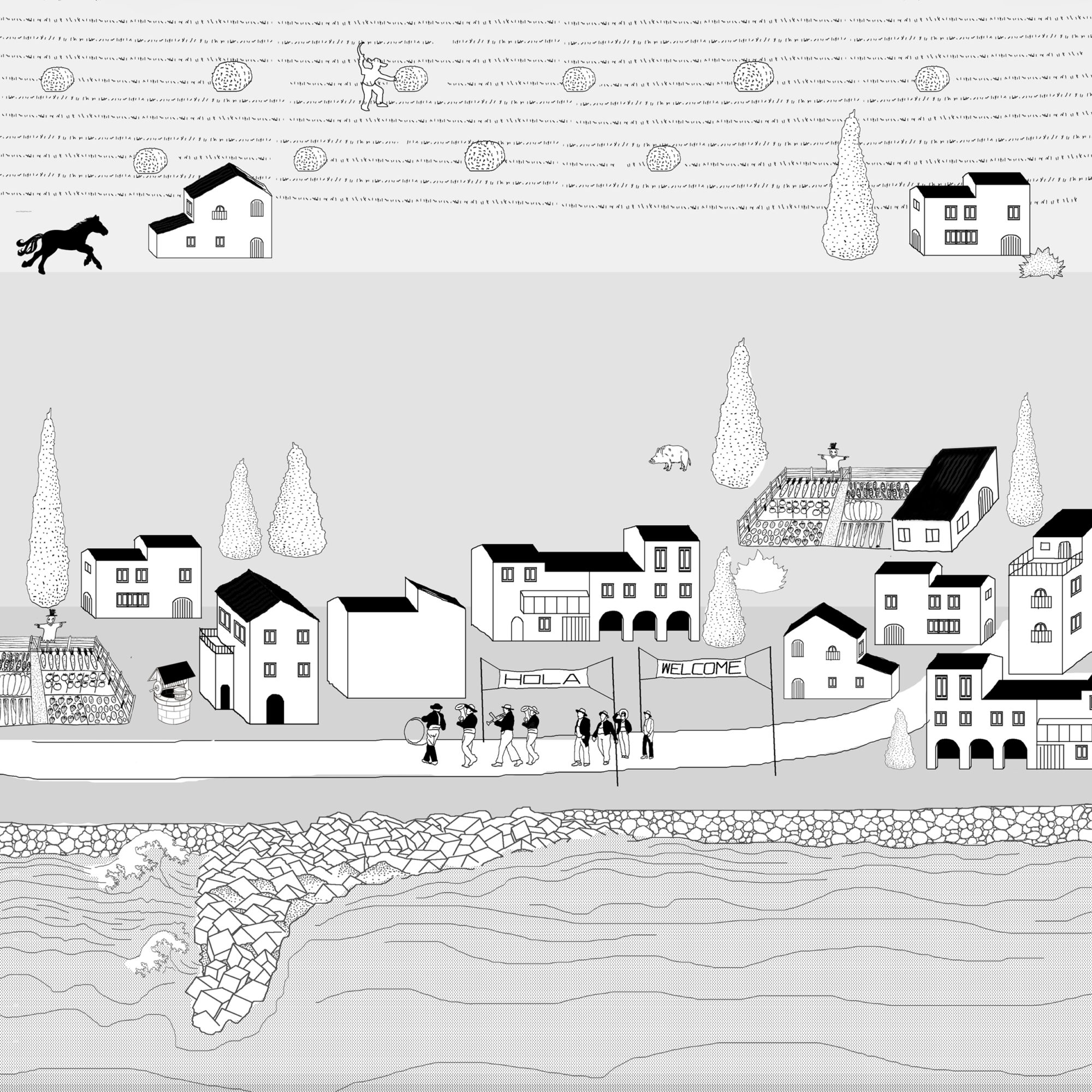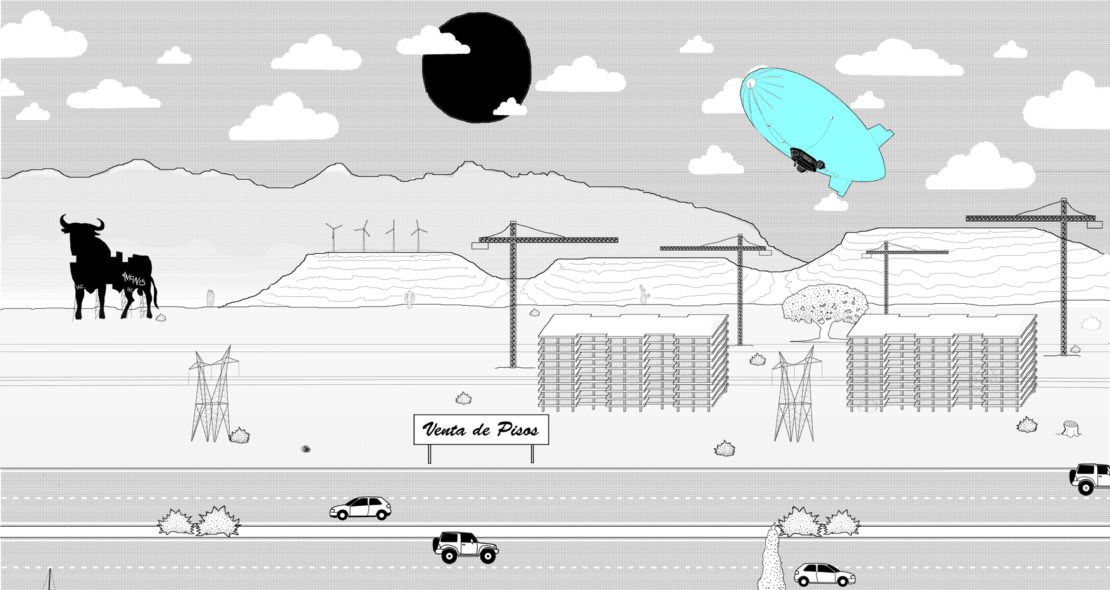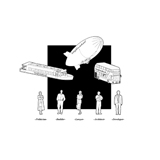Arquinautas de la cosmopista
Victor Manuel Cano Ciborro


Background: In february 1973 –and along two weeks- a double-decker
bus was transformed into a traveling and audiovisual library
thanks to the different architecture schools in uk. The project,
carried out by the aa, was inspired in the concept of polyark
regarding the idea of cedric price about a collaborative net for
knowledge and awareness.
May 23, 1982. Julio cortázar and carol dunlop drove their
volkswagen combi for a month through the paris-marseille highway
under the premise of not leaving that road. As a result, they
discovered all the minor issues of the territory and collected
them in the book ‘autonauts of the cosmoroute’.
In 1997 the “housing bubble in Spain” arose and the wild
speculation caused the disappearance of an aesthetic and ethical
sense in the dynamics of construction.
In 2007 the bubble bursted causing a devastating housing crisis,
the economic rescue of the savings banks, the increase of the
evictions and the destruction of both natural and human
ecosystems.
In 2015 an interview of Pascal Gielen to Rem Koolhaas was
published in the exhibition catalogue of “Constant. New Babylon”.
The Dutch architect states that ‘the matter is not about bringing
use to a project, but to tell stories.’
Current situation: limbo space: The “Unfinished” is synonymous of
pure uncertainty, or as Cedric Price could say, a “Limbo Space”.
In these areas, according to the British architect, the most
intense moment of the architecture takes place, since the essence
of architecture is no longer laying in a stable construction, well
defined and with a specific programs, but in unstable situations
that are inhabited by underling characters out of all standard,
cliché or economic role.
In the “Unfinished”, the stakeholders no longer askthemselves what
is imposed or what is planned, but What are the aesthetics of the
limbo? Who lives in the limbo? What are their lifestyles?
Detection-action: In 2016 the construction industry begins to
revive and the “aesthetics of the post-bubble” do not respond to a
change of paradigm. In this context, a project arises to make the
agents involved in the unfinished state of the Spanish housing and
infraestructure VIEW, EXPERIMENT and LEARN FROM THEIR BODIES the
scenario caused by themselves. Thus, rather than promoting a
specific action, this project is positioned in a previous state
where there is no big interest in seeking a “happy end” to these
“Unfinished” territories, but in knowing how to shape the needs of
the people out of any design pattern.
Proposal: An itinerant and critical observatory is proposed
conformed by the Involved Agents: Developers, builders, lawyers,
politicians and architects, who will travel in transport systems
-with an oniric-satiric-critical design- to the ‘Unfinished’. The
aim is to sensitize -from the very same skin- to rethink new urban
plans, laws, construction and / or lifestyles.
This program of critical mobility will travel through 12 “Limbo
Spaces” of the Spanish territory divided into three
observatories:
1_Critical maritime Observatory: To study the coasts, the
watersheds, the shores and the other natural assets and protected
lands that they have been silted by mass tourism.
2_Critical road Observatory: To check out the periphery of the sui
generis stories embodied by a population with forced aesthetics
and culture to adopt ways of life imposed by promoters,
regulations and formal abstractions.
3_Critical flying Observatory: To be aware of how the fertile
territories have become obsolete by the existence of
infrastructure that did not respond to real users’ needs.
Credits
Arquinauts of the Cosmoroute. Itinerant Critical Observatory.
Author:
Víctor Manuel Cano Ciborro
Team:
Alejandro Burgueño Díaz,José Manuel de Andrés Moncayo, Ana Sabugo
Sierra, José Javier Cullen Afonso, Rocío Romero Rivas
2016
